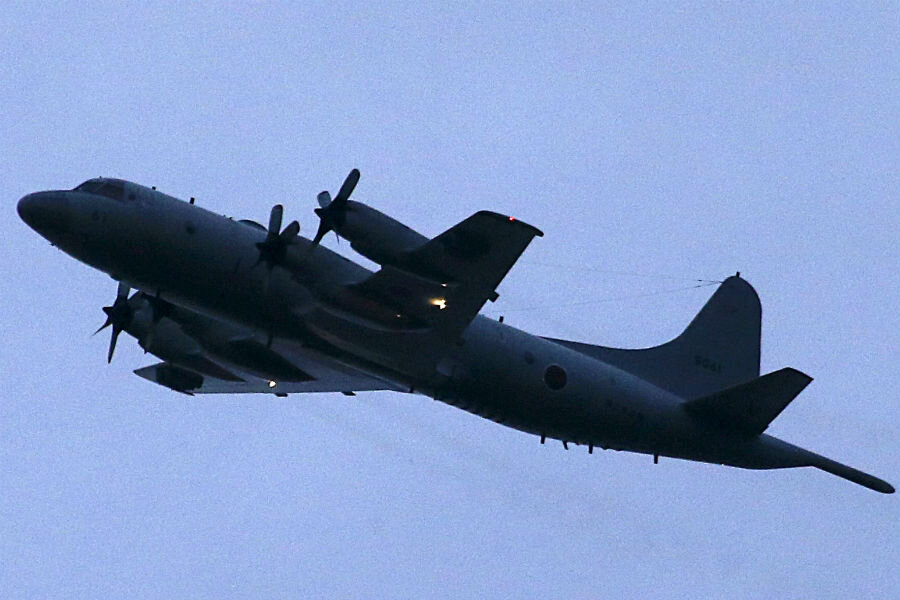Japan, Philippines monitor China by air in the South China Sea
Loading...
This week, a Japanese surveillance plane with crew from the Philippines flew over areas of the South China Sea that the Philippines are in dispute with China over, Reuters reported.
China's expansion and reclamation of islands in the South China Sea has escalated tension among Southeast Asian countries, and coordination between Japan and the Philippines may be perceived in Beijing as tacit support from Japan that the Philippines have rights to contested ocean territory.
The increase in activity in the region comes at a time when Southeast Asian leaders are jockeying for control over a swath of ocean that provides a tenth of the fish caught by global companies, The Christian Science Monitor reported. Japan, Asia’s second-biggest economy after China, receives a cut of the $5 trillion in cargo that passes through the shipping routes of the South China Sea each year.
“Certainly Japan does not have any direct territorial interests in the South China Sea, but Japan's own national security will be greatly affected by any instability and conflict there, making it a legitimate stakeholder,” Corey Wallace, a specialist in Japanese security and defense policy at the Australia-Japan Research Center in Canberra, told The Christian Science Monitor.
Earlier this year, Adm. Robert Thomas, commander of the US Seventh Fleet, said that Japanese surveillance ships could supplement US efforts to monitor Chinese activity in the hotly contested region.
"I think allies, partners and friends in the region will look to the Japanese more and more as a stabilizing function," Admiral Thomas told Reuters in an interview. "In the South China Sea, frankly, the Chinese fishing fleet, the Chinese coastguard and the [Navy] over match their neighbors.”
The flight path taken by the Japanese plane was close to the Spratly Islands, which the Philippines claim, and where China is constructing man-made islands, at least one of which is large enough for an airfield, The Christian Science Monitor previously reported.
"We practiced search and rescue patterns, which are essential in any humanitarian assistance and disaster response operations," Col. Jonas Lumawag of the US Marines said at Puerta Princesa International Airport on Palawan island, the operations base for the drill 50 miles to the west, according to Reuters.
"This is our first time here and also with this kind of activity with the Philippines," Maritime Self Defense Force Commander Hiromi Hamano, head of the Japanese navy contingent, said after the planes returned to Palawan.
In coordination with the US, Manila also began military exercises in the area last week.
"We hope the relevant parties do not hype up or even create tensions in the region and we hope the parties concerned can do more to contribute to peace and stability in the region, rather than the opposite," Chinese Foreign Ministry spokesman Lu Kang said in a news briefing.
June 25, 2015: This story was corrected to accurately reflect the countries disputing territory in the South China Sea.





